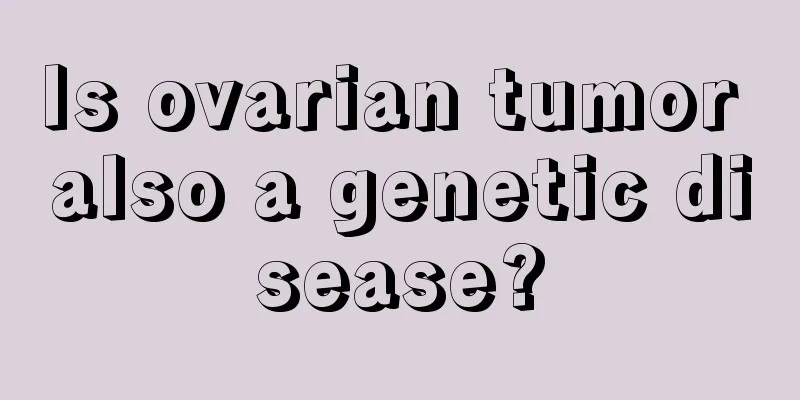Is ovarian tumor also a genetic disease?

|
Abnormalities in chromosome number and structure in ovarian tumors are of reference value in assessing prognosis. The survival rate of the normal karyotype group is higher than that of the abnormal karyotype group, and the survival rate of the complex abnormal karyotype group is significantly lower than that of the normal karyotype group and the simple abnormal karyotype group. So is ovarian tumor also a genetic disease? 1. Abnormal chromosome number: The chromosome changes in benign ovarian tumors are not significant, the most common being trisomy 12. The changes in the number of chromosomes in malignant ovarian tumors can be divided into two categories, namely, near diploid and highly aneuploid, among which near diploid tumors have a better prognosis. 2. Chromosome structural abnormalities The changes in chromosome structure of malignant ovarian tumors are relatively complex, mainly concentrated on chromosomes 1, 2, 3, 6, 7, 9, 11, 14, and 17. Among them, the abnormalities of chromosomes 1, 3, and 6 are quite common, mainly deletions and rearrangements, and the breakpoints are located at 1p34, lp36, 3p14-21, and 6q15-21. Other common rearrangements occur in 7p, 10q, llp, 14q, and 19q. There are not many abnormalities in chromosomes 2, 4, and 5. Chromosome 10 trisomy in Eo borderline cystadenocarcinoma may be a specific change in the early stage of chromosomes. 3. Marker chromosomes Studies on tumor-specific marker chromosomes have found that the breakpoints seen in chromosome rearrangements are highly consistent with the locations of rare and common fragile sites, and are characterized by non-random chromosomal abnormalities. Many of the genes at these frequent breakpoints are cellular oncogenes that play an important role in tumor formation. The more important marker chromosomes for ovarian malignancies are isochromosomes i(1q), i(4p), i(5p), i(6p) and i(12p). Malnutrition can reduce the number of ovulations. In fact, ovulation is an important carcinogenic factor. Periodic ovulation repeatedly causes damage and stimulation to the ovarian mesothelium, and also lacks a persistent physiological recovery period. This can explain why the ovarian mesothelium has a tendency to malignant transformation compared to the peritoneum. Ovulation also produces defects and unevenness on the ovarian surface, which easily forms ovarian mesothelial closed cysts, allowing carcinogenic factors to accumulate and stay there for a long time and attach to the mesothelium. |
<<: Are ovarian tumors generally hereditary?
>>: Ovarian tumors are also hereditary
Recommend
What are the routine examination items for teratoma
Ovarian immature teratoma, this tumor is very mal...
Do I need to do moxibustion every day during the dog days of summer?
The weather is very hot in summer, which is often...
What is the way to permanently remove hair?
There are many benefits of hair removal. Because ...
What is the best treatment for cheilitis?
Cheilitis is a relatively common disease. Cheilit...
The effect of dandelion and ginger
In our daily life, dandelion is a very common pla...
What are the misunderstandings in the treatment of lung cancer? Three major misunderstandings to avoid in the treatment of lung cancer
Elderly lung cancer and advanced lung cancer cann...
Can nasopharyngeal cancer cause edema in the ear?
Can nasopharyngeal cancer cause ear effusion? 1. ...
Experts talk about how to prevent and treat fibroids
Experts talk about how to prevent and treat fibro...
How to control the abdomen during confinement
Everyone loves beauty, and every woman wants to h...
What are the blood routine indicators?
In general, routine physical examinations also in...
Characteristics of gastric cancer patients sleeping at night
The characteristics of gastric cancer at night in...
How much does the surgery for right ovarian teratoma cost?
How much does it cost to treat teratoma? This is ...
Is it better to do CT or enhanced CT to confirm liver cancer? 3 other liver cancer examination items
I believe many of you have heard of CT scans, and...
Treatment of esophageal ulcer
Everyone has different tastes. Some like to eat h...
Several sun-prone areas that are easily overlooked in skin cancer prevention
Studies have confirmed that prolonged exposure to...









